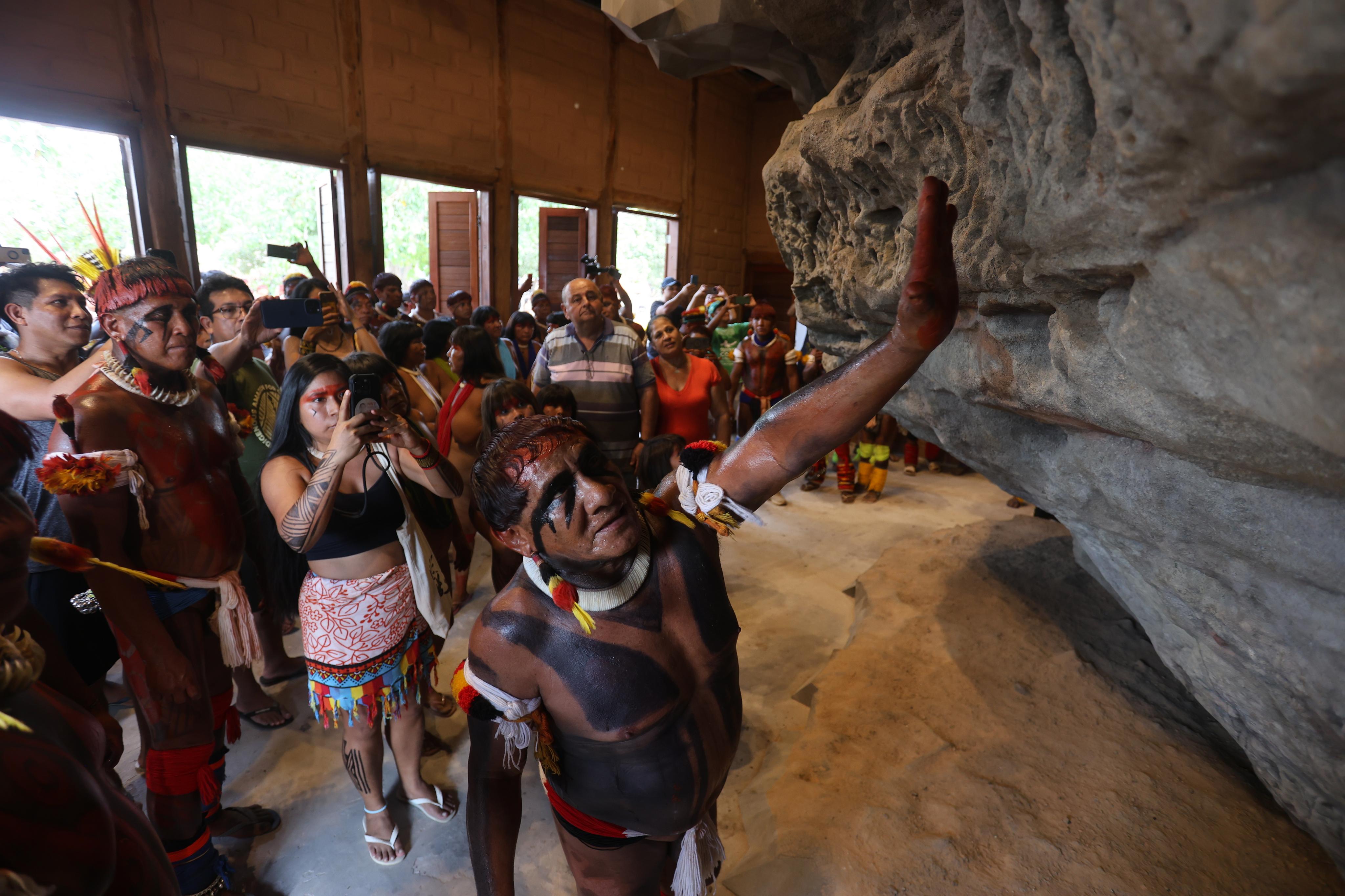Crozier funds and transports real-size replica of sacred cultural heritage from Spain to an Indigenous territory in the Southern South basin
The inauguration of the replica of the Kamukuwaká Cave on October 3rd, 2024 was marked by powerful rituals and emotions, representing a historic and unprecedented moment. For the first time, a reconstruction of an Indigenous heritage site was produced in Europe, brought over by sea freight, and assembled at the new Cultural and Territorial Monitoring Center, the only museum in the Xingu Indigenous territory. Crozier funded and managed the transportation of the cave and was thrilled to play a part in preserving cultural heritage for future generations.
“This cave represents our strength, our unity, and our history. Today is very special for the Xingu people because we are reclaiming our story. ” — Chief Elewoka Waurá

Paintings, ornaments, dances, and music filled the Ulupuwene village in Alto Xingu during the celebrations, showcasing the resilience of a community to preserve its culture, especially since the original cave, located outside the demarcated area, was vandalized in 2018.
“Today is a very special day for the inauguration of the cave replica, which is a tool that will show our strength, our struggle, and our unity as the Xingu people. It contains everything, it contains our history. I am very happy.” - Chief Elewoka Waurá
The Cave
The discovery of the vandalism occurred during a visit with researchers from Factum Foundation, in partnership with People’s Palace Projects (PPP), which then initiated a long collaborative process for documentation and recovery, culminating in the construction of the inaugurated replica.
Visiting the cave is a way to pass down the ancestral history of the Xingu people to the younger generations. The cave is named after a mythical hero, Kamukuwaká, who “ascended to the sky villages to protect his people.” The drawings on its walls inspired the graphic patterns of body paintings, ceramics, and regional basketry. “You think we are not human. We also have stories to tell; we know where it happened. We consider that site sacred, and it’s not for nothing. It is where the first ear piercing occurred, where many medicinal herbs and fish can be found,” recounted Chief Pere Yalaki Waurá from the Piyulewene village.
The Replica
People from all over Xingu and various ethnicities celebrated the installation of the replica which weighs over one ton and measures 8 meters wide, 4 meters high, and 4 meters deep. It was produced in a studio in Spain by Factum Foundation and traveled 8,000 kilometers from Valencia to the port of Santos by ship, and then to Xingu by truck.
Yogesh Thakker, International Shipping Manager, Crozier comments: ‘This has been one of the most rewarding projects of my career. Transporting the cave replica by sea was the best option and means the carbon emissions were one-tenth of what air freight would have been.’
Beyond the long journey, the construction of the replica went through an extensive collaborative creation process, which included the oversight, critique, and approval of the Indigenous community. “On their own, they could not create the cave; they needed us to reconstruct it and verify that it was correct,” emphasized Akari Waurá, chief of the Tetepeweke village.
Queen Mary University of London and Iron Mountain provided funding through its Living Legacy initiative to build the Cultural and Territorial Monitoring Centre, which now houses the replica of the cave in the village. Crozier Fine Arts, a company under Iron Mountain, facilitated the transport of the cave from Valencia in Spain to the village. “We are honored to be part of the recovery of such valuable cultural memory for the people of Xingu, and we hope that the replica of the cave continues to impact future generations,” said Jen Grimaudo, Head of Global Sustainability at Iron Mountain.
For Yula Rocha, manager of Communication and Indigenous and Climate Projects at PPP, Brazil and the world need to know the story and strength of Kamukuwaká as an example of the global climate struggle. “Kamukuwaká is an important Brazilian archaeological and cultural site that carries the source of ancestral knowledge we need in the face of the climate emergency to reconnect with nature, keep the forest standing, and respect all forms of life,” she highlighted.



